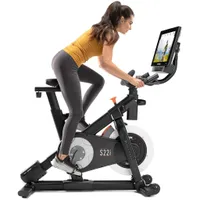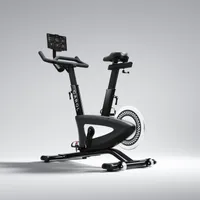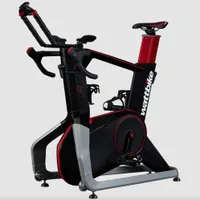What's the best exercise bike? I'm a fitness expert and these are my top picks
The best exercise bikes for home workouts based on our in-house testing
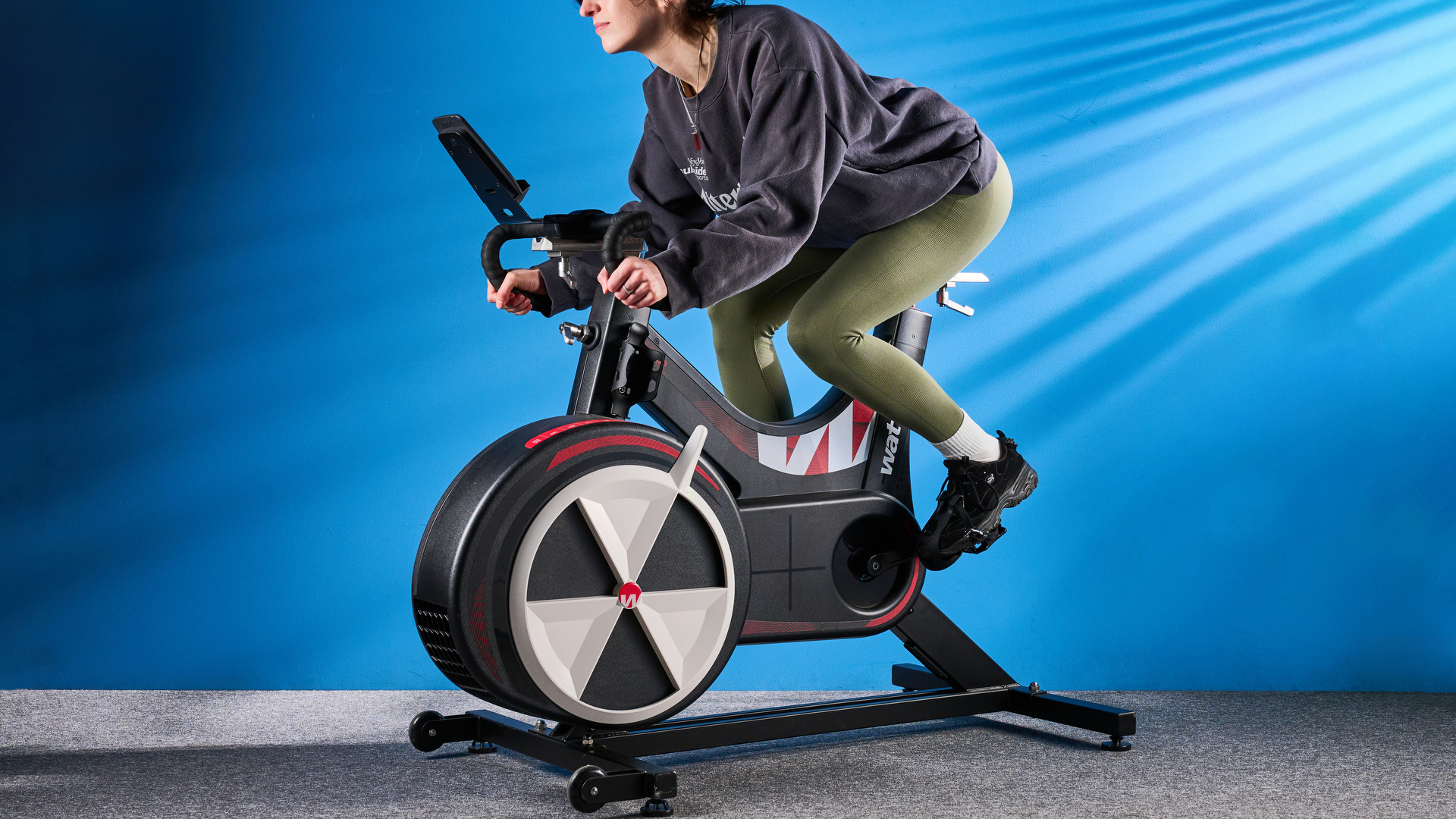
Here at Tom's Guide, we test the best exercise bikes on the market to help you decide which to install in your spare room or garage gym. The right bike will help you build lower-body strength and cardiovascular fitness; the wrong bike will become an expensive place to store clothes.
Right now, the best exercise bike if you're looking for a community of like-minded individuals to motivate you is, unsurprisingly, the Peloton Bike+. It's been around for a while, but it's still a fantastic bike.
If you're looking for a bike with air resistance, the best choice right now is the Wattbike Air. It's an impressive bike from an impressive brand, and will help you get fit.
If you're a cyclist who prefers to be out on the road, the Zwift Ride with KICKR Core is a great choice. It feels pretty close to cycling on the road, and you'll be able to join a virtual peloton with your mates on Zwift.
We've also found other alternatives to suit every style of cyclist and budget. Dig out your cleats and get ready to ride, but read on to find our top picks first.
Quick list
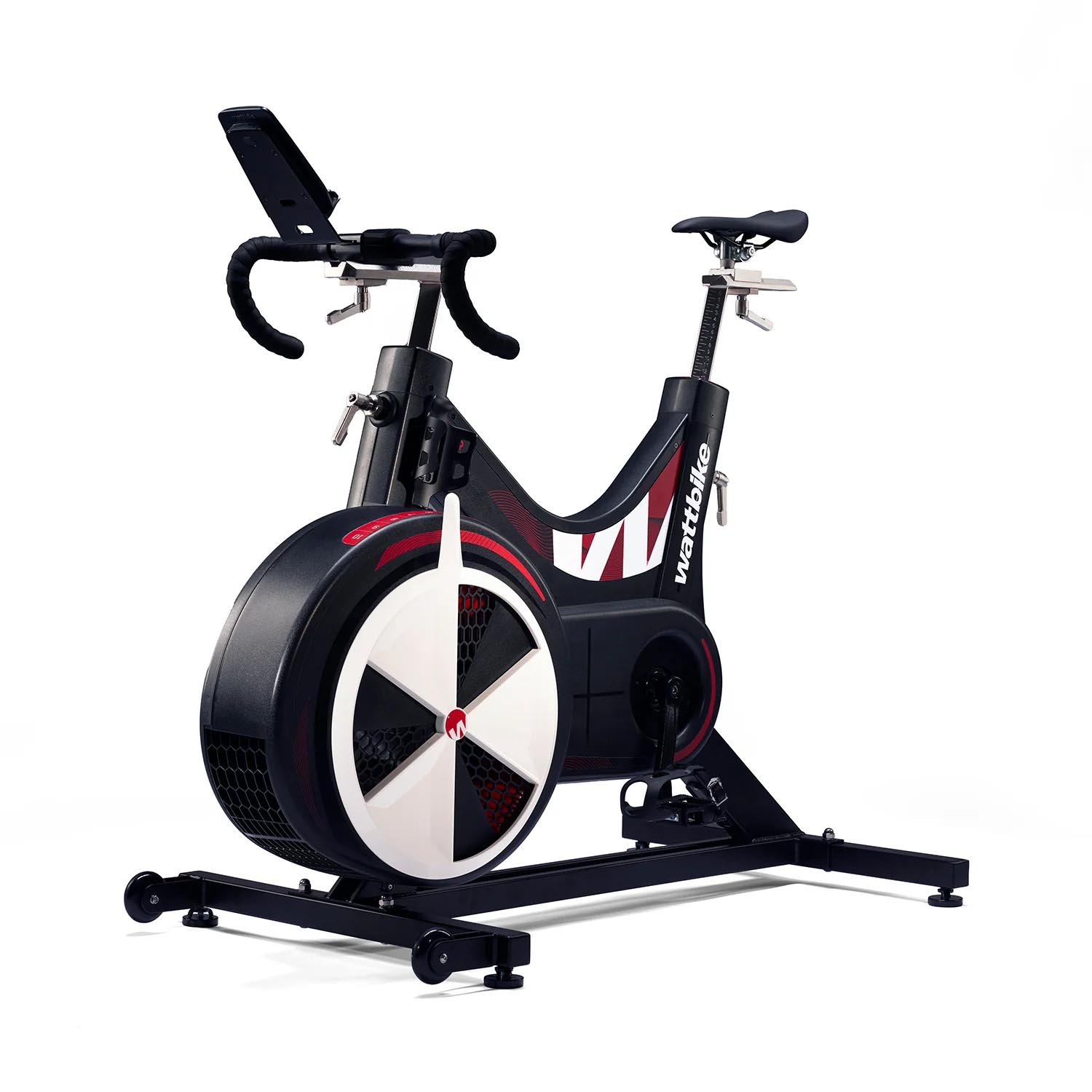
The Wattbike Air uses air resistance for a serious workout. It's similar to an exercise bike you'd use in the gym, or see athletes training on, and it packs a punch.

The Peloton Bike+ is the best smart exercise bike you can buy. The large display lets you stream on-demand and live classes, and there are 100 auto-adjusting magnetic resistance levels, so you can just focus on your workout.
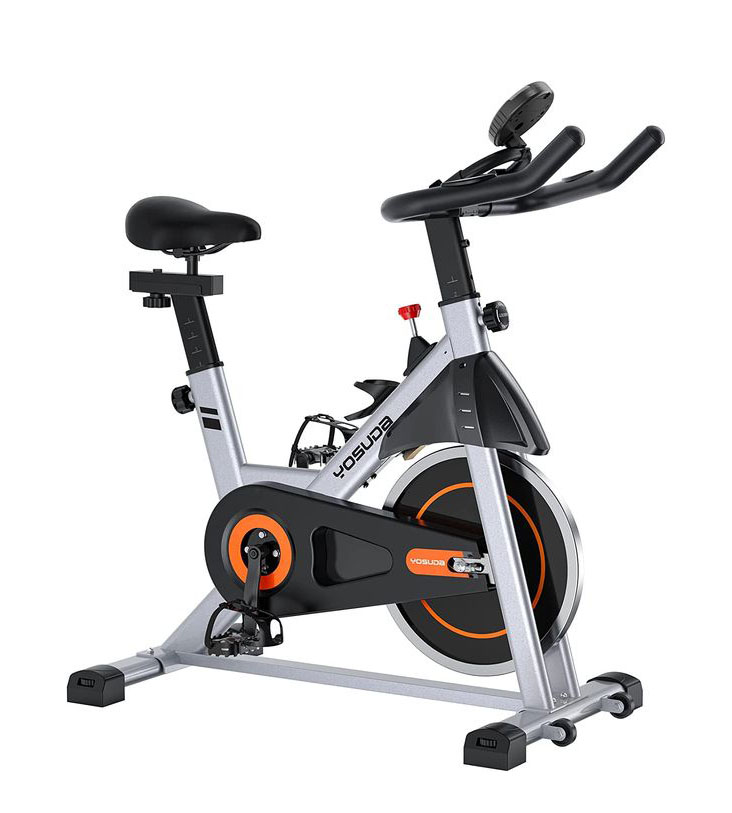
The Yosuda Indoor Cycling Stationary Bike isn't as adjustable as the Sunny Health & Fitness bike, but it has a display for workout stats, an optional phone mount, and an effective friction-based resistance system.

This toes the line between turbo trainer and exercise bike, but if you're a keen cyclist, looking for an exercise bike that feels like you're on the roads, this comes close to the most realistic feel.
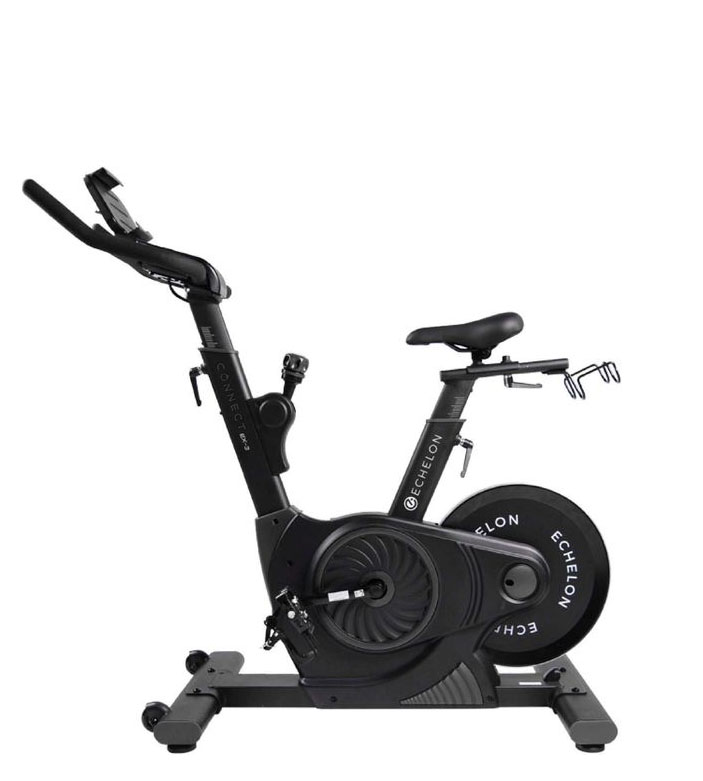
The Echelon EX-3 Smart Connect Bike also has a near-silent magnetic resistance system with 32 levels, but you'll need to supply your own display to access Echelon's live and on-demand classes and workouts.
Best exercise bikes you can buy right now
Why you can trust Tom's Guide
Best air resistance exercise bike
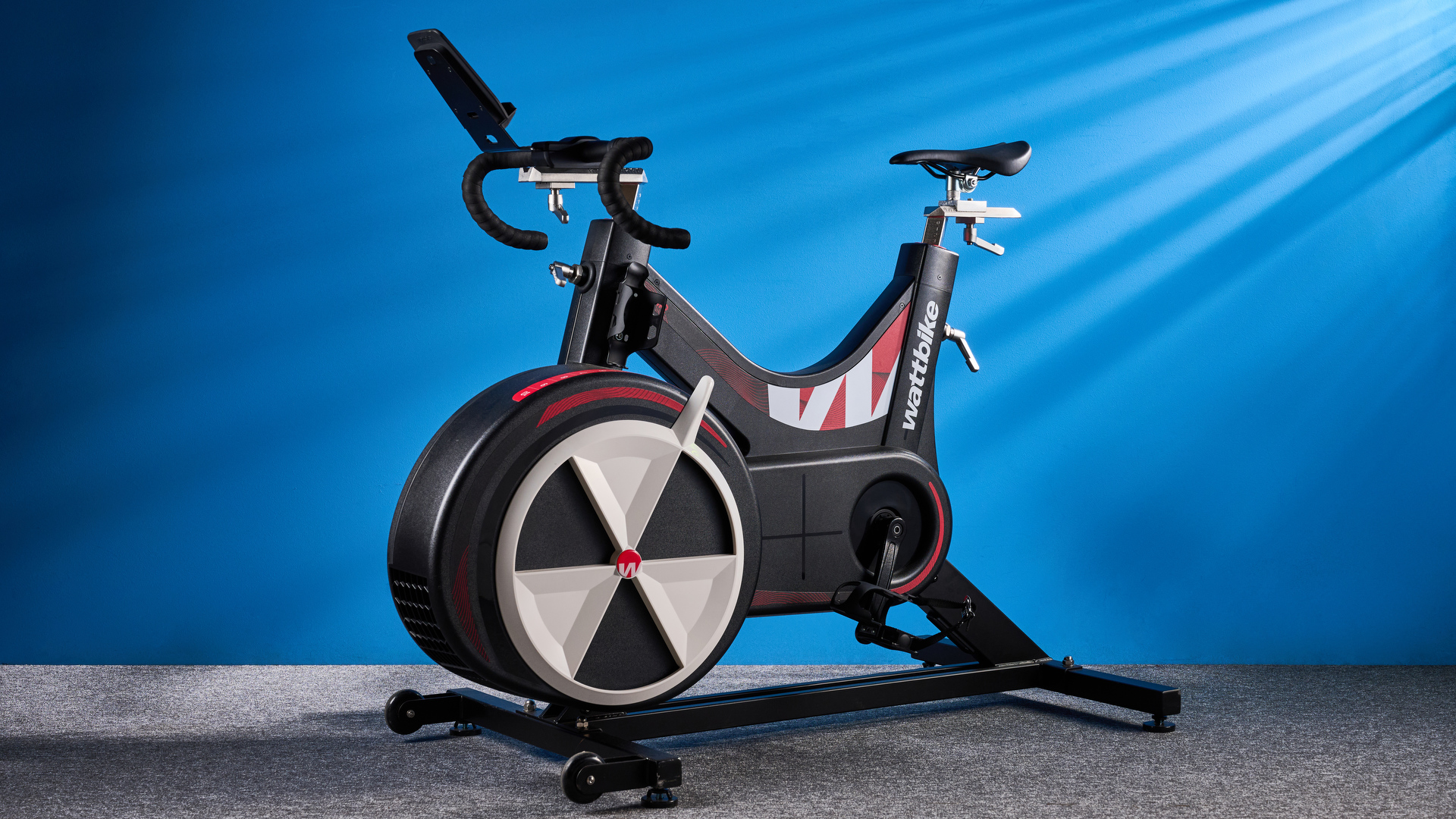
Specifications
Reasons to buy
Reasons to avoid
Tom's Guide staffer Erin tested the Wattbike Air, and was, quite literally, blown away by the air resistance bike. It's similar to those you might have used in the gym, with the manual resistance wheel on the side, and is best suited for sprints and HIIT training, rather than standing out of the saddle and climbing.
Erin said, "The air resistance tops out at 2500W, which is higher than the Wattbike Proton’s 1800W. If you want hill climbs, then you’ll be better off with the Proton — this is probably the bike I would choose for myself, as I want to replicate real-world workouts rather than interval training, which is what the Air is designed for."
That said, thanks to the fantastic companion Wattbike app, if you're looking for a bike to help you boost your fitness, rather than pedal for hours, the Wattbike Air is a great choice. Erin found the app had plenty of excellent features and workouts, and was able to hone her cycling technique by using it.
It's also a subscription-free bike, which is a massive plus.
- Read our full Wattbike Air review
Best exercise bike for community

Specifications
Reasons to buy
Reasons to avoid
The Peloton Bike+ is the upgraded version of the Peloton Bike, the connected exercise bike that popularized virtual spin classes. The Bike+ comes packed with Peloton tech, including a large touchscreen for you to interact with the Peloton app.
While the premium bike plays a part, the experience relies heavily on the app's on-demand and live classes. It's an expensive option — the bike is $2,500 and you need to be a member for $44 a month — but it's popular for a reason.
The Peloton instructors are famed for their high-energy classes, so if you're after a way to keep motivated to train regularly, the Bike+ is a good option. Aside from the software, the Bike+ actually feels like the kind of equipment you'd find in a studio.
Not so long ago, I visited the Peloton Studio in London and tried a 30-minute in-person class. It was led by Leanne Hainsby and broadcast live to Peloton members. It was intense, but a lot of fun. And the studio bikes still had the famed leaderboard, so I could see how I fared compared to all the members spinning away at home too.
The bike also has an auto-resistance mode, where the magnetic resistance will automatically changed based on the instructor's recommendations, so you just have to keep pedaling rather than worry about fiddling with menus or buttons.
The display is also where you'll find all of your workout stats, and you can view your training history to keep track of your progress. The Bike+ has a rotating display too, so you can swivel it and do mat-based workouts instead.
It's a tech-heavy option, and an expensive one, but it's also one of the most versatile exercise bikes available right now. And Peloton has thought about the smaller details, like adding water bottle holders, USB-C charging ports, and Bluetooth.
Best real life exercise bike

Specifications
Reasons to buy
Reasons to avoid
We managed to persuade our resident 2:25 marathon runner, Nick Harris-Fry onto an exercise bike, and he was impressed by the Zwift Ride. "The Zwift Ride is one of the best exercise bikes available, and offers much better value than rival smart bikes, which will generally set you back more than twice as much. It’s the easiest and most enjoyable way to ride on Zwift, and the bike I’d buy if I was starting afresh with my indoor cycling setup," he said.
If you're new to the Zwift app, it allows you to cycle on virtual routes alongside your friends, do workouts, and ride iconic courses. It's almost the social media for cyclists, and it's a great way to beat the boredom indoors.
The Zwift Ride comes with the Wahoo KICKR Core trainer, which is one of the best turbo trainers on the market. You have to connect the two together, but once riding the bike, it feels like a complete unit in the same way as other smart bikes.
The ride is smooth and very quiet — if you use a fan to keep you cool during workouts, which I highly recommend doing, you barely hear the bike itself. Shifting gears using the handlebar controls and Zwift Cog is seamless and quiet as well, and the KICKR CORE responds quickly to changes in the gradient when riding routes on Zwift to automatically adjust for climbs and descents. It's closer to cycling outside than a lot of the other bikes on this list, and is a great pick.
- Read our Zwift Ride smart bike review
Best budget exercise bike
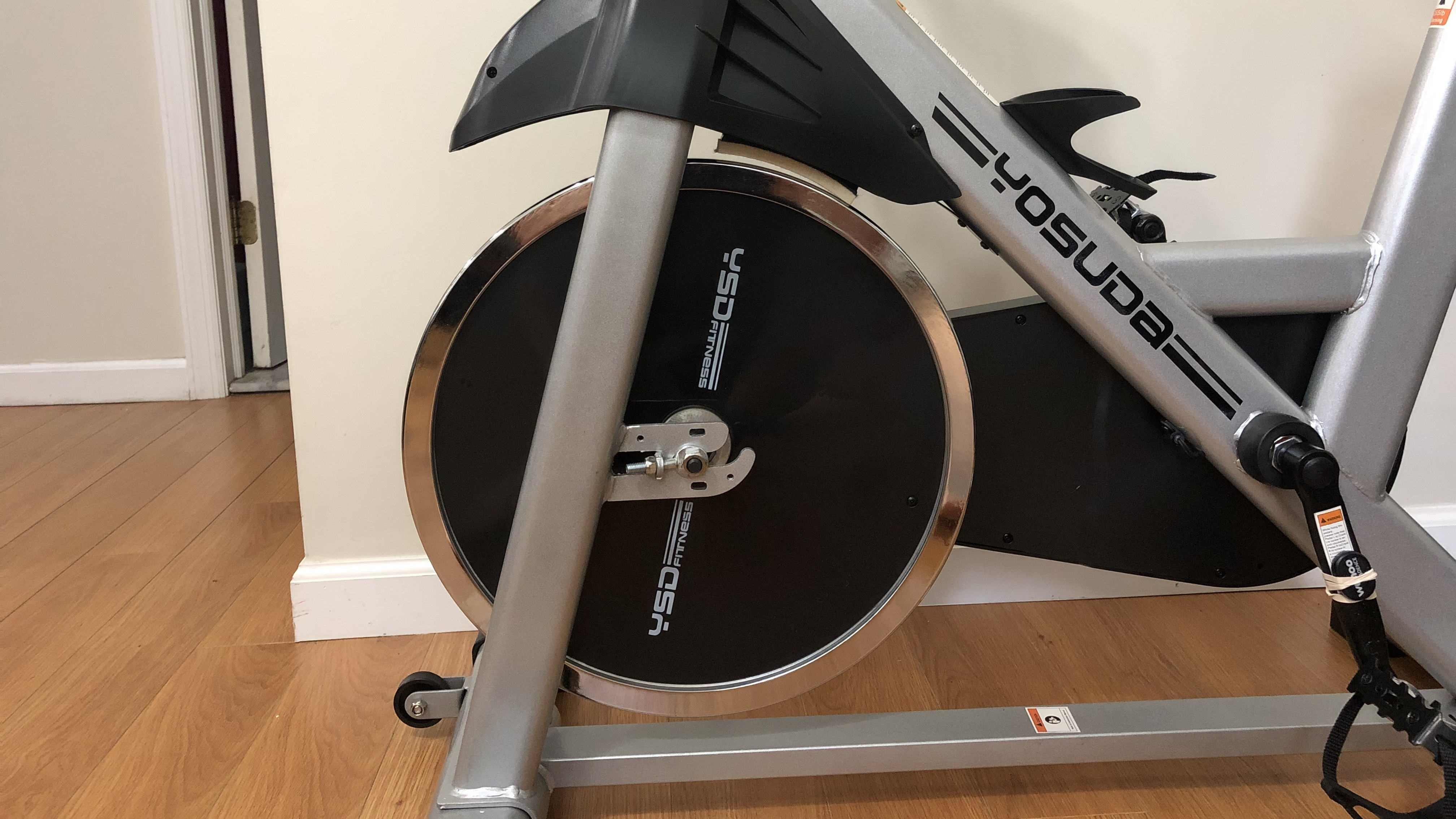
Specifications
Reasons to buy
Reasons to avoid
Despite it's budget-friendly price, the Yosuda Indoor Cycling Stationary Bike comes with a display to help you keep tabs on your workout stats. It shows essential metrics like time, speed, distance, and calories.
Of course, this doesn't come close to the amount of data you can track on a smart exercise bike like the Peloton Bike+, but it's a helpful way to track your progress for a fraction of the price.
Like with the Sunny Health & Fitness Indoor Cycle Bike, there are no classes to join (unless you clip on the included smartphone mount and use a workout app or free YouTube session), but it's a durable beginner-friendly bike.
When our tester first set up the bike, they were worried it would feel a bit unstable, but, fortunately, that wasn't the case. Instead, whether they took it for a speed or distance ride, the bike stayed firmly on the ground while in use.
The friction system added enough resistance to make our workouts effective, but after a while, you'll want to upgrade to a machine that'll challenge your muscles a bit more. But for cardio-boosting workouts on a budget, it's a great choice.
- Read our full Yosuda Indoor Cycling Stationary Bike review
Best Peloton alternative
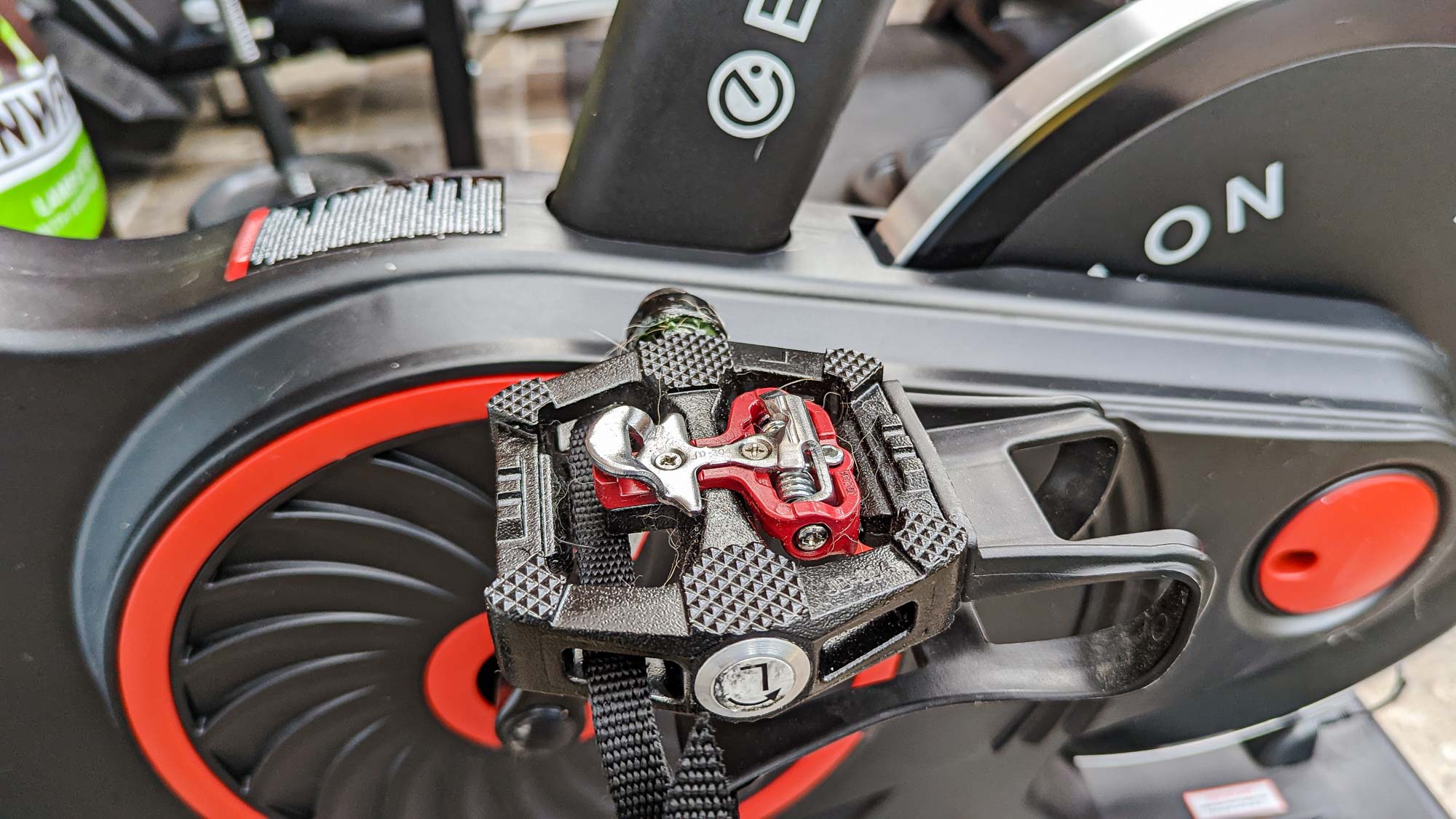
Specifications
Reasons to buy
Reasons to avoid
If you're looking for a way to add some spin classes to your routine without breaking the bank, the Echelon EX-3 is a great choice. Like the Peloton Bike+, the EX-3 has a magnetic resistance system with 32 levels to choose from.
The magnetic resistance is quiet, too, so you won't disturb others in your home or nearby neighbors. However, it doesn't come with a display, so you'll need to use your phone or tablet to access the Echelon app for on-demand and live classes.
And, like with Peloton, the app requires an monthly subscription, which will set you back $39.99 per month. But you'll also get access to off-equipment workouts, like running, yoga, stretch, and Pilates sessions, and up to five user profiles.
Given Peloton's status as the best smart exercise bike manufacturer, it's hard not to compare the Echelon EX-3. We found that the seat wasn't as comfortable, the resistance mechanism wasn't as smooth, and the lack of display is a let down.
But these are small complaints. And it's important to remember that the Echelon EX-3 costs just a fraction of the Peloton Bike+ for a similar experience. During testing, we liked the range of classes, and the option to just use the bike for your own workouts.
How to choose the best exercise bike for you
Choosing an exercise bike for your home can be a challenge. After all, you first need to decide whether you want a standard friction-based bike or a smart one, and factor in the increased cost of a smart bike and the ongoing subscription.
However, once you've made a decision between the two styles, there are other practicalities, like the physical size of the bike, whether it can be easily stored away between sessions, and if the bike can be adjusted for your height and posture.
It's also worth thinking about the exercise bike's resistance mechanism. This will effect how much you can customize the intensity, and you can select from magnetic resistance, flywheels, and belt-driven bikes.
Magnetic resistance generally has the largest range, usually covering 100 different levels, and is the most quiet, but bikes with these systems are often towards the higher price bracket too.
Also tested
We regularly review exercise bikes, but not all of them will make the main roundup. Some come close, though. So, if you're after more options, these are the bikes we've tested that didn't quite make the cut.
Sunny Health & Fitness Indoor Cycle Bike
This is a great, affordable pick for those looking to add a bike to their spare room for less than $300. It doesn't have the same bells and whistles as some of the other bikes on this list, but it's a good contender.
Read our full Sunny Health & Fitness Indoor Cycle Bike review
NordicTrack S22i
It's a decent Peloton alternative, that's always on sale. The Studio Cycle also has a feature the Peloton doesn't have: incline adjustment. The bike's incline can be adjusted between -10 and 20 percent while you're working out, helping more closely mimic the road cycling experience should you want it. It's a great bike, but there are newer options on the market.
CAROL Bike
The CAROL Bike is not like the other smart bikes on this list. There are no virtual workouts or live classes — instead, an AI-powered algorithm intelligently adjusts the resistance to challenge your body and boost your fitness in just 9 minutes.
Read our full CAROL Bike review
BowFlex VeloCore Bike
This premium machine is an excellent option for virtual spin classes, but as BowFlex filed for bankruptcy, it's unclear what the future holds for the JRNY workout app, which is an integral part of the experience on this bike.
Read our full BowFlex VeloCore Bike review
Flexispot Cycle Desk Bike V9 Pro
This exercise bike is not like the rest. It has a tray mounted where the handlebars usually sit so that you can work on a laptop, tablet, or pen and paper while you cycle. It's not intense exercise, but still a good way to keep active.
Read our full Flexispot Cycle Desk Bike V9 Pro review
Wattbike Atom Next Generation
If Peloton's main selling point is its classes, the Wattbike Atom Next Generation's is that it closely mimics the real-world cycling experience. The bike doesn't have a display, but syncs with cycling apps like Zwift, and has auto-adjusting magnetic resistance and elevation features.
Read our full Wattbike Atom Next Generation review
SoulCycle At-Home bike
If you're looking for dance-focused cardio cycling workouts, the SoulCycle At-Home bike is your best bet. Operated by Equinox, your bike and monthly subscription give you access to SoulCycle's high-energy classes without leaving the house. It's a pretty costly model, though, which could outprice many in today's climate.
How we test the best exercise bikes
To help you determine which exercise bike is best for you, we put them to the sweat test! We install each of the bikes in our homes or workout studio for at least a month, and put them to the test over several different workouts.
Since we had the bikes to hand, we looked at how easy it was to use, move around the house, maintain, and, for the smart exercise bikes, the range of classes on offer.
Plus, we consider any extras like how many profiles you could set up, and useful accessories like phone mounts and water bottle holders. And on the smart machines, we looked at the ongoing subscription costs associated with the bike, and what you get for your money.
FAQs
Are exercise bikes good for weight loss?
If your goal is to lose weight, then exercising at home can play an important role. However, it's worth keeping in mind that physical activity is only plays one part, as sleep, diet, and overall wellbeing also factor in.
Investing in a machine like an exercise bike can be a great way to increase your activity levels throughout the day, particularly if you're tight on time. Standard bikes allow you to just jump on and work out, so are ideal for short sessions, like 30 minutes on an exercise bike, and extended periods.
If you're more motivated by classes, then the best smart exercise bikes are also a good place to start. Once you're set up with access to on-demand workouts, these high-intensity classes can help you make exercise a regular part of your routine, which is a key part of losing weight using an exercise bike.
Either way, cycling helps raise your heart rate, so you burn energy during your workout, and if you keep the intensity high to sustain your high heart rate, then it'll boost your metabolism (the amount of energy you burn throughout the day).
If you're looking for an accessible entry point to exercise, then you may be comparing exercise bikes vs walking. Spin classes are more intense and will burn more energy, while walking is free and can be more easily built into your daily routine by walking to work or the store, so it'll come down to your preferences and goals.
Should you buy an exercise bike or turbo trainer?
If you're trying to decide between one of the best exercise bikes and best cycling indoor trainers, we're here to help. Unlike exercise bikes, which are essentially stationary indoor bikes, cycling indoor trainers are designed to help convert your regular push bike into home workout equipment.
If you're tight on space, then an indoor cycling trainer (also known as a turbo trainer) may be the better option since you can disconnect the unit when not in use and store away. Of course, you also need an outdoor bike to begin with.
But if you do already cycle or own a bike, then it's a more cost-effective choice, as turbo trainers are available for a fraction of the cost of many exercise bikes, especially smart bikes like the Peloton Bike.
Though for the extra money, you do get more features like a display virtual classes, and magnetic resistance systems. Plus, you can find feature-packed turbo trainers, like the $1,600 Wahoo KICKR Move, which is designed to mimic natural cycling movements and has Wi-Fi connectivity for smart features.
Generally, the ideal set up will depend on how you like to train. Some low-cost turbo trainers can be a great way to make your existing road bike pull double-duty for indoor and outdoor exercise. Stationary bikes make a great addition to your home for low-impact movement, and smart bikes are perfect if you like motivational high-intensity virtual spin classes.
What's the difference between a spin and stationary bike?
Spin bikes are designed for high-intensity exercise and spin classes. The handlebars are placed at a distance to encourage you to learn forward or ride out of the seat. Plus, the resistance mechanism (often friction-based or magnetic) increases the intensity to increase the challenge.
Because of this, most smart bikes (those that connect to the internet for on-demand and live classes) are spin bikes, as this type of exercise lends itself well to instructor-led environments, where increasing the intensity can require additional motivation or guidance.
However, you can find some standard or non-smart exercise bikes designed for spin classes, like our top bike, the Sunny Health & Fitness Indoor Cycle Bike. It has a similar spacing with the handlebars to get you to lean forward, but you'll need your phone and a workout app to take classes.
Stationary bikes encourage you to sit comfortably upright and are designed for more leisurely cardio exercise. These are ideal if you're looking to add some movement to your day, or keep your legs moving while working from home or catching up on your favorite TV shows and movies.
This style of bike is usually cheaper and is more likely to have a friction-based resistance system than a magnetic one, and you can adjust the resistance to specific levels using the workout metrics display.
Do you need an app to work out on an exercise bike?
One of Peloton's main selling points is the app, which is your gateway to the brand's high-energy classes. Many of the best exercise bikes have a display built in, or at least a phone holder, allowing you to use the machine's app. And if you buy a non-smart stationary bike, many people assume that you need to join a class to get the most from the bike.
It's seen as the default way to train on an exercise bike; take a seat, load up the app, and join a live or on-demand virtual class. This has been helped along by the popularity of spin classes, where people meet in a single space and join a high-intensity, instructor-led class often soundtracked by dance or nostalgic hits.
So if this is why you wanted an exercise bike, then you'll definitely need to factor in the ongoing subscription cost before you make a choice. If you choose a smart exercise bike, then you're generally locked into the equipment manufacturer's platform, like with Peloton, BowFlex (JRNY) and NordicTrack (iFit).
For regular exercise bikes, you can choose any of the best workout apps, but the bike won't sync to the app or allow you to automatically record your training. If that's important to you, then one of the best smartwatches would make a good addition so you can keep track of your workout stats and heart rate metrics.
However, you don't actually need an app to train on most exercise bikes. It can elevate the experience, but it's not necessary (although, if you don't take out a Peloton subscription, then the bike gets set into a feature-limited Just Ride mode).
If you'd prefer to do light exercise, take an indoor ride while you're working, on a call, or catching up on the latest books and TV shows, then you don't need an app. Plus, there's nothing stopping you from taking an intense ride, it's just a bit easier to program when someone else (like an instructor) takes the lead on when to adjust the resistance or cadence.
Upright vs recumbent vs spin exercise bikes
In our round up, we primarily focused on spin-style exercise bikes. These are designed for you to lean forward close to the handle bars, as if cycling intensely on a road bike. These are great for intense classes, of the sort Peloton deals in.
The focus of spin bikes is to allow you to pedal at higher intensity, and to lift out of your seat with ease. If you don't typically use a road bike or want a more traditional cycling position, then you'd want an upright bike instead.
These do what the name suggests: the seat, pedal and handlebar positions are designed to keep you upright, not leaning forward. This is a typical cycling position, and best for if you want to work out and raise your heart rate, but without the variability and intensity of spin classes.
Recumbent bikes are slightly different to spin or upright bikes. These allow you to lean backwards, supported by a more chair-like seat with a full back rest. This style of bike is common if you're just getting into exercise or during injury recovery sessions.
Because of your positioning, the impact on your joints is a lot lower, so it allows you to exercise without placing strain on your knees. The lower intensity also makes recumbent bikes great for graded exercise programs.
Air bike vs magnetic exercise bike
These two types of bike are similar, but produce resistance differently. Air bikes essentially have a large fan, which you power through pedaling. The faster you go, the faster the fan. This makes them great for high-intensity internal training (HIIT), especially as you need to overcome the initial inertia of actually moving the physical parts.
The downside is that it's very noisy. Magnetic bikes are a lot quieter. These use magnets (surprisingly) to accurately control the resistance. So you can set it at level 10, and increase to level 11 as your performance improves. It's a more consistent experience, and better suited to classes or progressive overload training.
Aside from the experience, price often factors in here, too. Air bikes are generally less expensive, as the fan mechanism isn't as complex, while magnetic bikes are more complicated and also higher cost. If you're working out at home or in a shared space, the quiet of magnetic resistance is worth the difference though.
Get instant access to breaking news, the hottest reviews, great deals and helpful tips.

Sam Hopes is a level 3 qualified trainer, a level 2 Reiki practitioner and fitness editor at Tom's Guide. She is also currently undertaking her Yoga For Athletes training course.
Sam has written for various fitness brands and websites over the years and has experience across brands at Future, such as Live Science, Fit&Well, Coach, and T3.
Having coached at fitness studios like F45 and Virgin Active and personal trained, Sam now primarily teaches outdoor bootcamps, bodyweight, calisthenics and kettlebells.
She also coaches mobility and flexibility classes several times a week and believes that true strength comes from a holistic approach to training your body.
Sam has completed two mixed doubles Hyrox competitions in London and the Netherlands and finished her first doubles attempt in 1:11.
- Jane McGuireFitness editor

